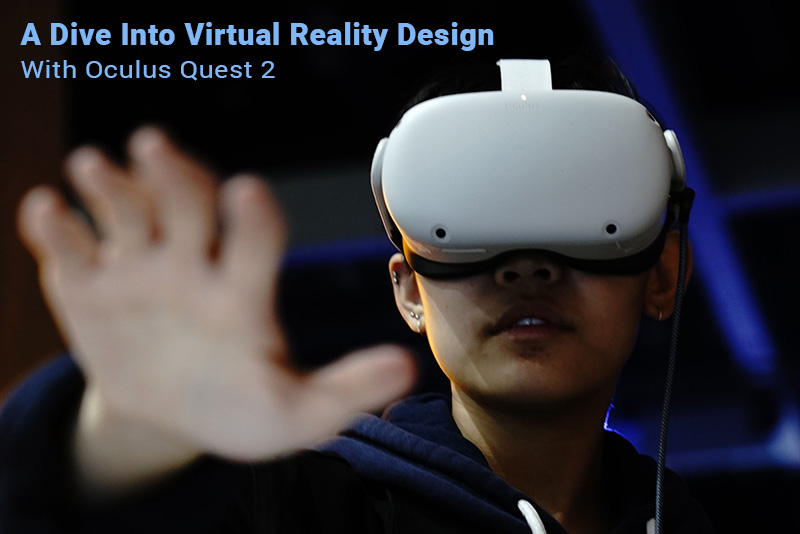Our team at Design Interface recently tested the Oculus Quest 2 headset for Virtual Reality (VR) design using the Gravity Sketch app. Led by Daniel Roth, who has experience designing a Little Tikes toy at the Cleveland Institute of Art, our goal was to try out this technology.
Oculus Quest 2 impressed us with its well-designed Meta product, consisting of a headset with built-in computing power and two hand wands for drawing control. The User Interface (UI) is integrated into the screen, and hand controllers with buttons enhance the drawing experience.
A notable feature was the straightforward integration of the User Interface (UI) into the screen, with hand controllers acting as digital brushes and palettes. This intuitive process, coupled with real-time responsiveness, made the VR design experience user-friendly.
The Teams’ User Experience (UX) Reactions:
Daniel: “Gravity Sketch is a great tool for working out ideas in broad strokes (similar to sketching). The interface with Sub-D surfaces is especially good. One thing I have found is that it lacks granular control. Everything is loose and gesture-based, and some finesse would make it that much better. As far as downsides, my main complaint is that I wish there were more adjustments for people who wear glasses. Also, I get headaches after being in VR for too long.”
Anita: “I liked the feel of the headset on my head. It was not too heavy and did not bother my nose or eyes. It was very cool to see the whole object in 3D. The instructions were clear and easy to follow, along with the steps to start the program. The controllers would take some getting used to, but they felt comfortable in my hands. I did not get the chance to draw with it, so I cannot give my opinion on its use as a drawing tool. I would be very interested in using it.”
Adrian: “An exciting and novel way of approaching the sketch.” It’s a bit clumsy like the Ford Model T, but this is a new way, and it will only get better and more precise with time. Add a little verbal instruction to an AI engine, and the virtual sky is the limit.”
Doug: “I was impressed with the immersive environment and appeared to track well with my head movements. I felt a little woozy afterward. This might be useful for designing larger objects like furniture or cars, but I wonder how useful it is for smaller items with detail.”
Carla: “It really is a different reality and takes some getting used to for spatial awareness. Weird, but interesting! I can’t say I want to jump in and do all my sketching with this. It did cause some nausea and a slight headache afterward.”
Design Interface Inc. can show you what is possible. Our forward-thinking solutions for product design, package design, medical device design, graphic design, and photography unlock the value of your ideas as we communicate your message and goals. See more here: https://designinterface.com/

